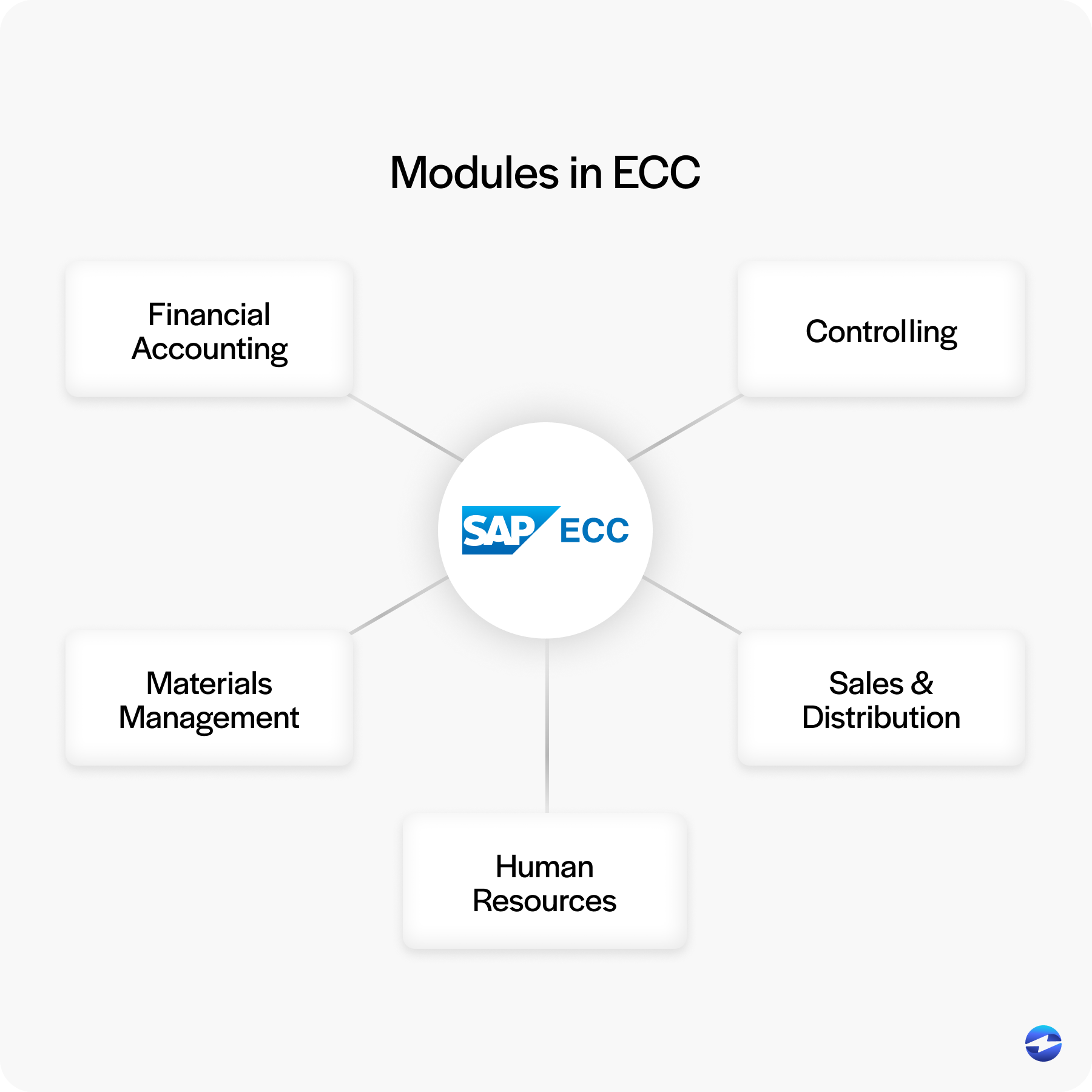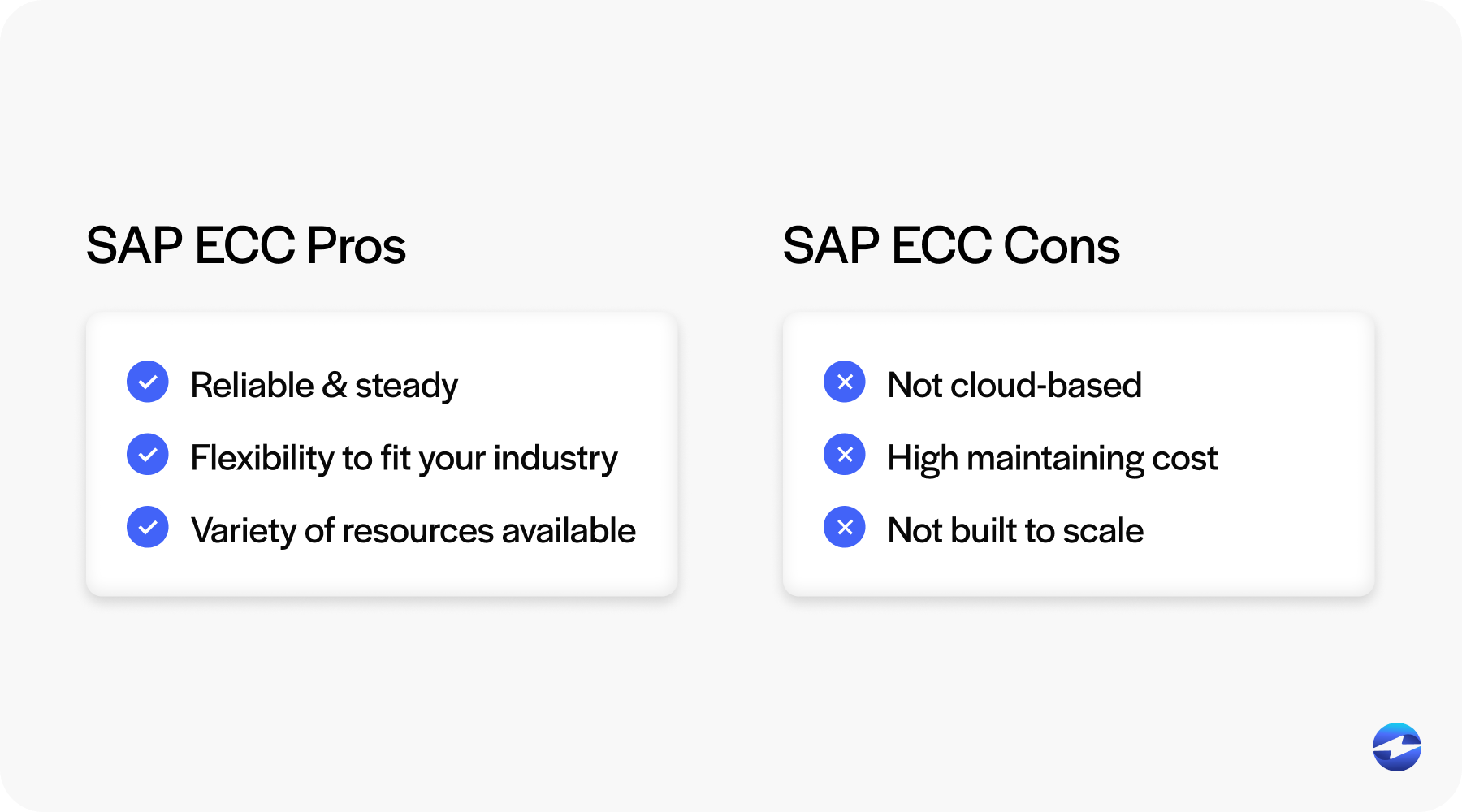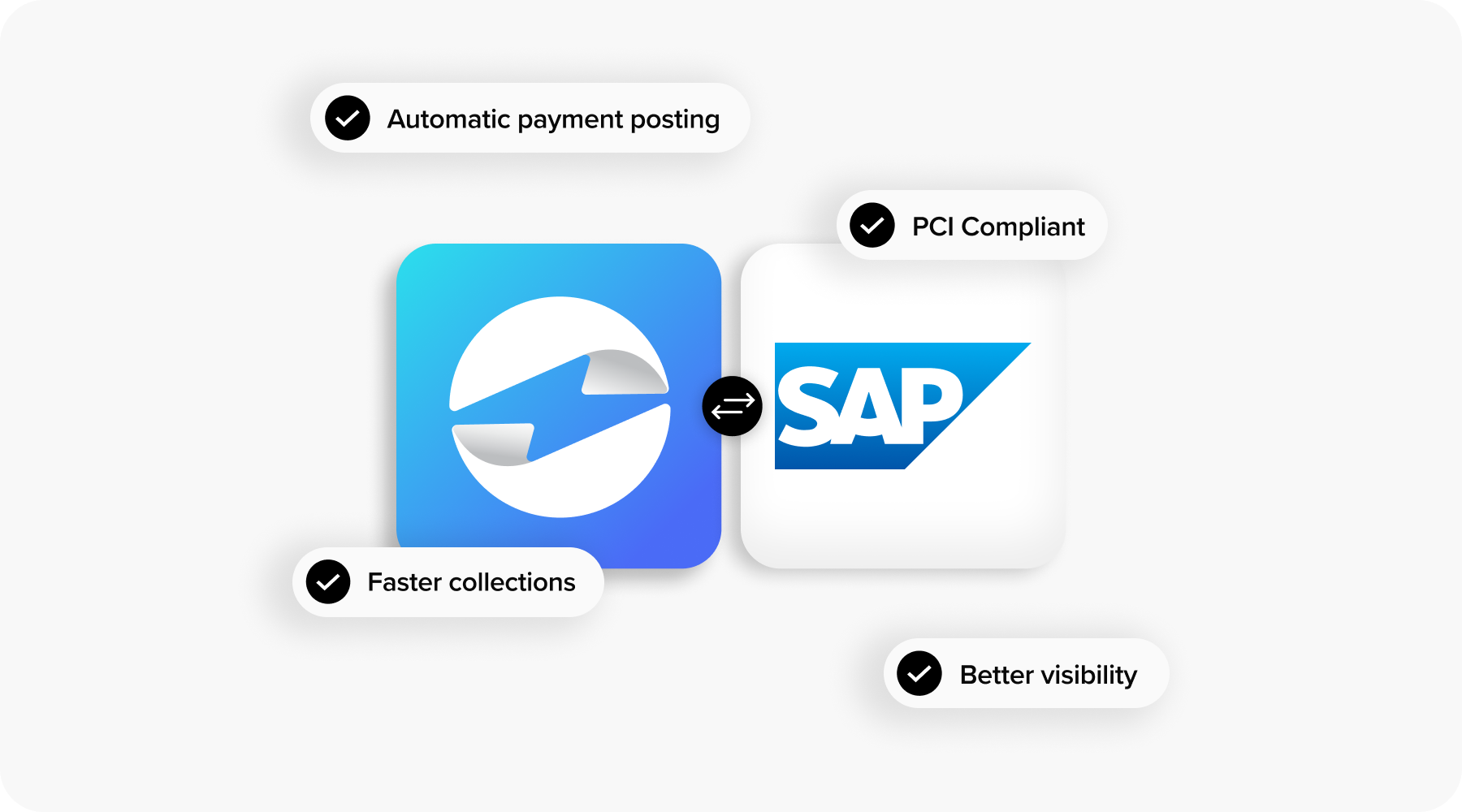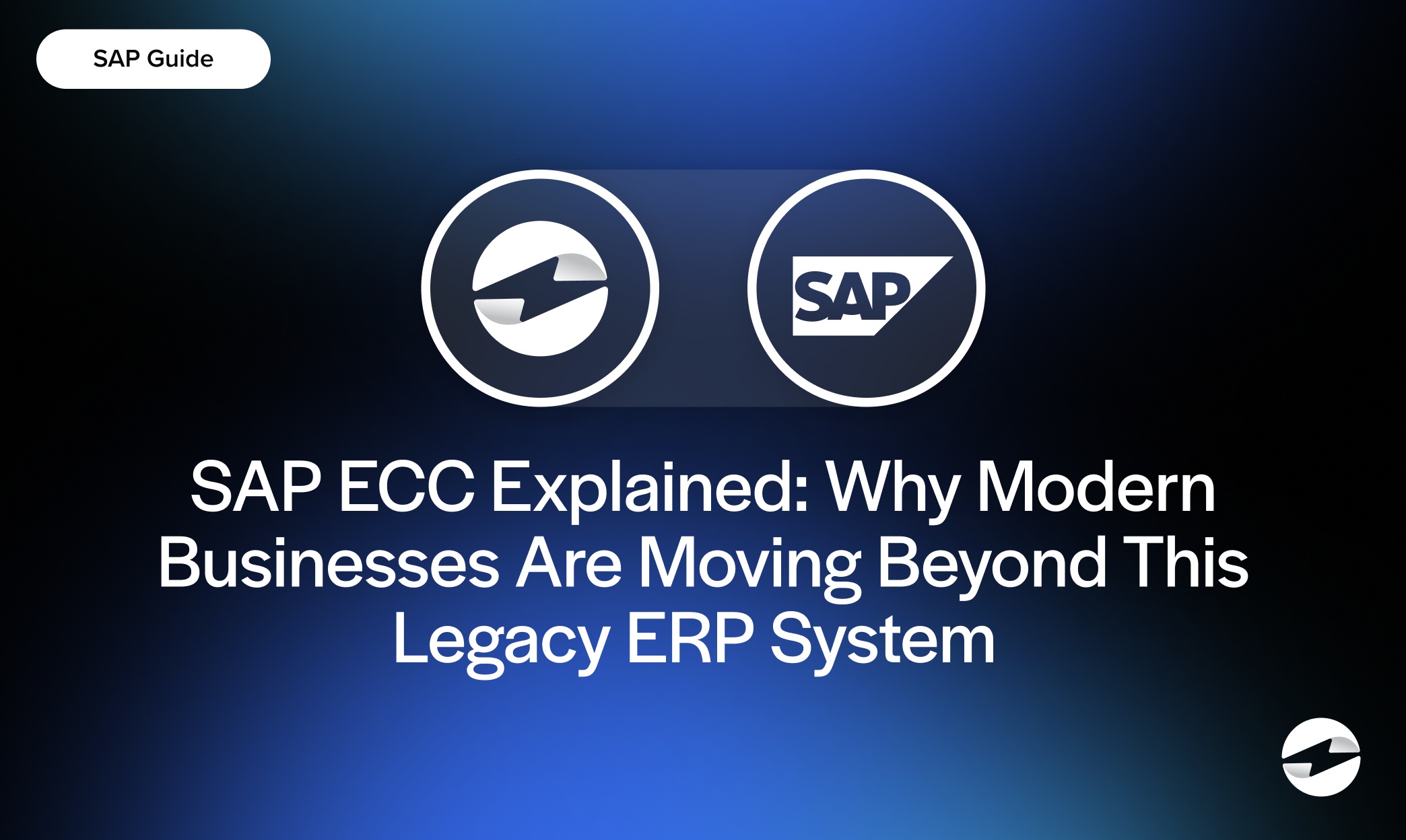Blog > SAP ECC Explained: Why Modern Businesses Are Moving Beyond This Legacy ERP System
SAP ECC Explained: Why Modern Businesses Are Moving Beyond This Legacy ERP System
If you’ve ever explored the enterprise software space, chances are you’ve heard of SAP ECC. For more than two decades, this system has been the backbone of enterprise resource planning (ERP) for thousands of organizations worldwide. It brought order to complex business operations, helped standardize workflows, and connected finance, logistics, and human resources into one system.
But times are changing. Companies that once relied on ECC now face new challenges that the system wasn’t designed to solve. The purpose of this article is to explain what SAP ECC is, highlight its strengths and limitations, and show why so many businesses are exploring newer SAP solutions or complementary tools like EBizCharge to modernize payment operations.
What is SAP ECC?
ECC stands for Enterprise Central Component. It’s one of the most well-known and widely implemented versions of SAP software. ECC came with a wide range of modules, including FI (Financial Accounting), CO (Controlling), MM (Materials Management), SD (Sales and Distribution), and HR (Human Resources). These modules worked together to give businesses a complete, integrated way to manage their operations.

At its core, ECC allowed companies to bring different workflows under one roof. Instead of having separate tools for finance, supply chain, and HR, organizations could rely on the SAP system to tie everything together. For many businesses, it was the first real taste of end-to-end process integration.
Strengths of SAP ECC
There’s a reason SAP ECC has had such a long lifespan. First and foremost, it’s reliable. Many companies still trust it to run their most critical operations without disruption. Over the years, ECC has built a reputation for being steady and dependable—a system you could count on.
Another strength is its depth. ECC was built with industry-specific processes in mind. Whether you were a manufacturer, a distributor, or a service-based company, there were modules and configurations to fit your needs. Combined with the ability to customize, ECC gave businesses the flexibility to shape the system to their own operations.
Finally, there’s the community around it. Because ECC has been so widely used, there’s a massive ecosystem of consultants, developers, and support resources available. This network made it easier for businesses to find the help they needed to keep their SAP solutions running.
Limitations of SAP ECC
As strong as ECC has been, it comes with limitations that are hard to ignore. One major issue is that it was built primarily as an on-premises system. In today’s cloud-first world, that can feel restrictive. Maintaining servers, handling upgrades, and ensuring connectivity across geographies requires significant resources.
Cost is another limitation. Licensing, support, and customization all add up. For smaller or fast-growing companies, the price tag of maintaining ECC can be daunting. Then there’s the user experience. Compared to modern cloud-based ERPs, ECC’s interface feels dated and less intuitive.

Lastly, scalability is a real concern. As companies expand quickly or shift toward more digital business models, ECC sometimes struggles to keep up. While customization can solve certain issues, it can also create long-term complexity that’s hard to manage.
Why Businesses Are Moving Beyond SAP ECC
The reality is that many organizations are at a crossroads with ECC. Cloud adoption is no longer a nice-to-have; it’s quickly becoming the default way businesses expect to operate. Companies want ERP systems that are accessible from anywhere, require less maintenance, and can adapt as their needs evolve. Modern SAP software and competing platforms offer real-time analytics and far more intuitive user experiences—areas where ECC shows its age.
Cost pressures also shape decisions. Subscription-based cloud systems give companies predictable expenses and can lower the burden of maintaining on-premises infrastructure. At the same time, SAP has made it clear that its future lies with S/4HANA, signaling that ongoing investments in ECC may not pay off in the long run. Between rising expectations from users, financial considerations, and SAP’s own product roadmap, it’s no surprise that more businesses are exploring what comes after ECC.
Optimizing Payments in SAP ECC with EBizCharge
While some companies are moving on, many still rely on ECC for their daily operations, especially for financial workflows like SAP billing. This is where EBizCharge comes in as a valuable add-on. It integrates directly with SAP ECC to streamline payment operations, reduce manual effort, and modernize a legacy system.

With EBizCharge, payments are automatically posted into accounts receivable and the general ledger. That means less manual entry, fewer errors, and faster reconciliation. Customers also gain access to online portals where they can pay invoices at their convenience—something that ECC by itself doesn’t offer.
From a compliance standpoint, EBizCharge adds another layer of protection. Built-in security features support PCI compliance requirements, protecting sensitive cardholder data. By pairing SAP billing software with a reliable payment processing solution like EBizCharge, businesses can cut costs, speed up collections, and improve the customer experience.
The best part is scalability. As transaction volumes grow, EBizCharge scales alongside your SAP system, making it a long-term option for companies that still rely on ECC but want more modern capabilities.
Best Practices for Moving Away from SAP ECC
Even if you’re using add-ons like EBizCharge to optimize SAP billing, the reality is that ECC won’t be around forever. Planning for the future is essential. The best approach is to create a clear roadmap that considers your business’s size, needs, and current setup.
Start by assessing all your current customizations and integrations. Many companies have years of tweaks built into their ECC systems, and not all of them will translate seamlessly into newer environments. Cleaning up your data early makes migration easier later.
Training employees is another critical step. Moving from ECC to a newer SAP solution or even another platform entirely requires change management. Teams need to understand why the change is happening and how it will benefit them. This is especially true for finance and IT teams who spend the most time inside the system.
The Future Beyond SAP ECC
SAP ECC represents a milestone in ERP history and a signpost pointing to the future. It proved how powerful integrated systems could be, but it also highlights the challenges of relying on legacy technology in a cloud-driven world. The real takeaway isn’t just that ECC is aging—it’s that businesses now have a chance to rethink how their systems support growth, agility, and customer experience.
For companies still running ECC, the decision isn’t only about when to move on but how to get the most value while planning that transition. Integrations, like those offered through third-party payment processors or enhanced SAP billing software, can bridge gaps and buy valuable time. At the same time, exploring modern SAP solutions or cloud-based ERPs sets the stage for long-term efficiency and competitiveness.
In other words, ECC’s story isn’t just about what it was—it’s about what comes next. The organizations that succeed will be the ones that prepare thoughtfully, align technology with strategy, and view change not as a disruption but as an opportunity to strengthen their financial and operational foundations.
